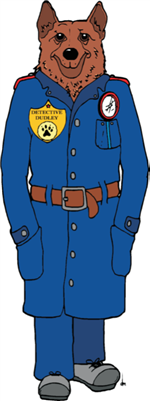We had another great week in our new classroom! This week, we focused on building classroom community. Our first activities addressed team building and communication - specifically respectful listening and speaking. Below you can see pictures from the "Paper Tower Tournament." In this challenge, students collaborated in randomly selected groups to build a tower made of printer paper. The goal is to create the tallest, free-standing tower using only 3 sheets of paper and 12 inches of masking tape. No additional materials or supports can be used.
After 10-15 minutes of group work, we paused to reflect. Using our guidelines for group work rubric, we evaluated our behaviors, considering areas of strength and places for growth. After setting personal goals, we were back to work.
At the end of the contest, we celebrated our many successes! Awards were given for the tallest, most unique, best design, and most creative use of materials. We then had a really great group discussion about what went well, what felt hard, and things we might do differently when working in a group - and on difficult tasks - in the future.
Our next challenge posed the same goal: build the tallest, free-standing tower. However, this time, the materials included dry spaghetti and mini-marshmallows. Once again, teams were randomly selected to encourage students to work with, enjoy, and appreciate the styles of different peers.
Again, we used the rubric at the beginning, half way through, and at the end to set goals and reflect.
Students were intrigued that their personal goals and reflections often changed based on the team with which they worked!
We had another very thoughtful post-discussion. Again students considered what went well, what areas were challenging, and appropriate goals for the future. (We are always trying to
Be More Awesome, right? :-)
Our final community building challenge of this week was based on a free set of dice from Chik-fil-A. For real! (Inspiration comes from many places!) Each side of the die had a theme: fame, family, best, worst, most embarrassing, etc. Under each theme was a series of questions to help us learn more about each other. Even though many of my 4th and 5th graders have been together since Kindergarten, I think it is important for students to not only know each other, but to feel "known." This helps to create a safe environment where children can try new things, take risks, make mistakes, and be themselves - all critical building blocks to success.
I typed up the questions on cardstock and, using a modified version of Kagan's Cooperative Grouping Strategy "
Fan, Pick, Read, Answer," we set out to learn more about one another. (Again, with the goals of respectful listening and speaking in mind!)
Students, again worked in randomly selected groups to promote understanding, friendship, and respect.
Questions/prompts included:
- Tell about a time you laughed so hard you could not stop.
- Describe the worst hair cut you've ever had.
- Have you ever had to speak or perform in front of an audience? How did it make you feel?
- Tell about something you did that made you feel proud.
Next week the upper grades will begin Math Quest, Problem Based Learning, and a dystopian book study. Stay tuned!



















.JPG)



























.JPG)

